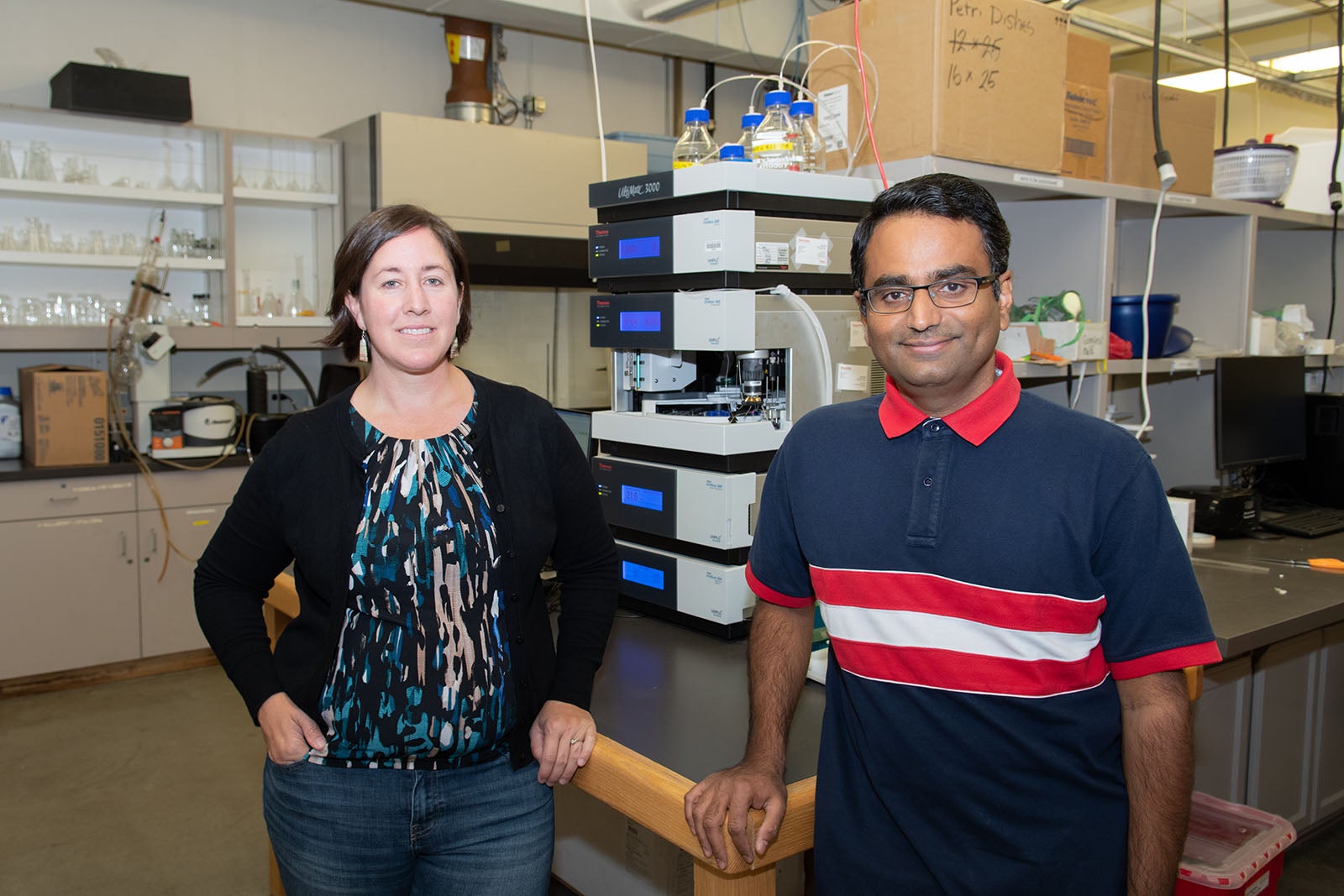Do you hear the teeny, tiny voices? Every second, bacteria invisible to the naked eye are using a special language to communicate amongst themselves. As Boise State chemistry faculty Raj Nagarajan and Lisa Warner explain, it is their ability to do so that orchestrates the shift from a single, harmless bacterium to a group of bacteria forming a deadly pathogen. By studying this language, Nagarajan and Warner believe it might be possible to cut the lines of communications – effectively cutting the legs off of a pathogen outbreak.
“In a nutshell, we work with enzymes that make signal molecules for bacterial communication. The enzymes are the mouthpiece of the bacteria. The signals are the language,” said Nagarajan, an associate professor.
These enzymes use a special language made up of what are called quorum sensing signals, which enable bacteria to conduct a census and then change their individual behaviors to function in a group as a multicellular mode. At this point, the bacteria have reached the quorum level. Nagarajan compares these bacteria to soldiers in an army – if their numbers are not great enough to successfully defend themselves against the host’s immune response, they “usually don’t attack the immune system or the host until they have enough population,” he said.

“When a quorum population is achieved, bacteria turn on cooperative, ‘group-beneficial’ social traits that include biofilm formation (for example, plaques on teeth), toxin secretion and development of resistance to antibiotics,” said Nagarajan. “Most of the virulence that we see in bacteria are not because they function as a single cell, but instead they behave like a group of cells working together towards a common goal such as fighting off an antibiotic threat. So our idea is to stop signal production. If the signals are not made, bacteria cannot communicate with each other.”
Stopping signal production will require the study and creation of quorum sensing inhibitors. To further this transdisciplinary chemistry and structural biology research, Nagarajan and Warner, an assistant professor, have been awarded support through the National Science Foundation Chemistry of Life Processes program, with co-funding from Established Program to Stimulate Competitive Research, in the amount of $466,860 over three years. These awards will make it possible to not only study how specific quorum sensing signals are made, but to offer collaboration and lab learning experiences for local high school teachers in the Treasure Valley.
The team also is eager to begin creating a 3D model of the enzymes to gain a better understanding of how the substrate interacts with the enzyme to make specific quorum sensing signals, using the Department of Chemistry’s nuclear magnetic resonance spectrometer, which Warner compares to an MRI for very tiny molecules.
“This will give information about the mechanistic understanding about how the enzyme works in order to create this very specific language that the bacteria used to communicate with one another,” said Warner.
– By Brianne Phillips